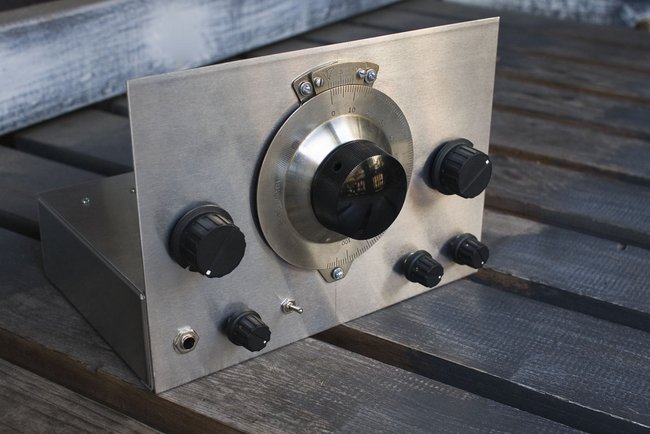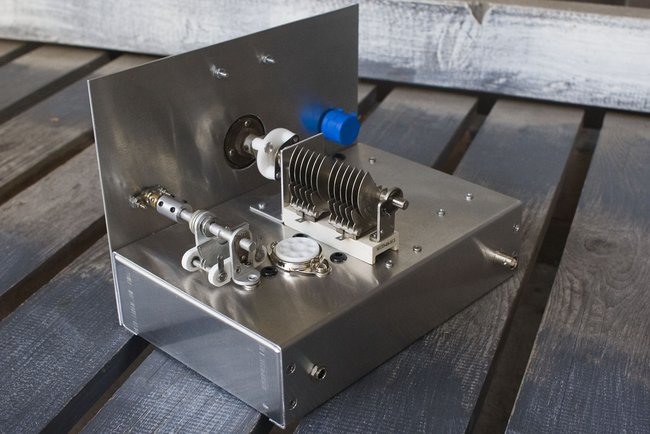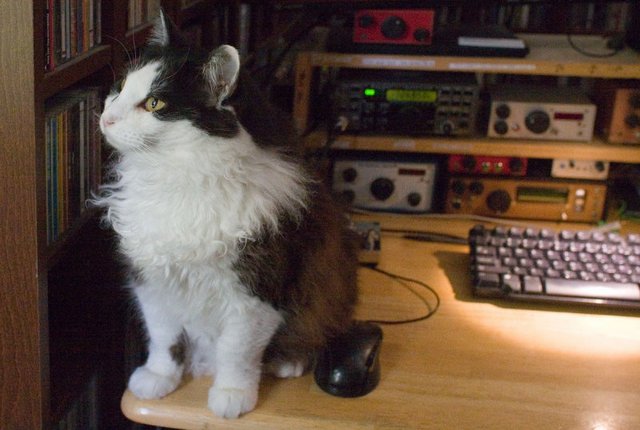My good buddy, Dave Richards (AA7EE), recently shared this message with his friends, many of whom do not know a lot about shortwave radio (yet):
“I’m waking up very slowly this morning – was up until 4:30am listening to the 49 meter shortwave band on a new receiver I’m building, dubbed “The Sproutie Regen” after my cat Sprout. “Regen” is short for regenerative, which refers to the type of circuit used in this receiver – it was developed by Howard Armstrong in 1915 and is 100 year-old old technology. Most of the parts are fairly new, with the exception of the tuning dial, which was made by a company from Massachusetts, called “National” – it’s probably around 50 – 70 years old, and the tuning capacitor, which is around 50 years old but had never been used. It was “new” in it’s box.
It’s not finished yet – will look a bit more spiffy when it’s done, but these are what its bones look like. 49M was fascinating last night. I heard an American propaganda station broadcasting to North Korea (The Voice Of Hope), and being jammed by the DPRK, an American propaganda station broadcasting to Cuba (Radio Marti), a very low power broadcaster from Canada, as well as Radio Habana Cuba, Radio Australia broadcast in Pidgin, Radio China International, as well as the Chinese domestic radio service (which Mao Tse Tung wanted all citizens to listen to), and a host of other broadcasters from all over. It was a fascinating cornucopia of signals from our very diverse world – and all on a receiver I built myself using 100 year-old technology.
I had trouble sitting in front of the desk because Jingles the blind kitty had curled up on the circular cushion on the chair and was happily sleeping. I somehow managed to squeeze myself in next to her and she is still napping here on the cushion next to me.
I love these late night sessions. It’s just me, a cup of coffee, a shortwave receiver to listen to far-off lands, and a lovely little furry creature slumbering next to me. Perfect. As some people in this part of the San Francisco Bay Area might say, ‘my natural vibrations are perfectly aligned with the planets and receiving much abundance.’
As for me, I’m just having a good time, thank you.”
Like it, too? Follow Dave, Jingles, Sprout, and all of his homebrew adventures via his excellent radio blog.




Michael – the front end (RF stage, regen stage and detector) are a fairly standard design that has been used many times over. It’s a circuit configuration I have used before, and already knew worked well. It uses a 2N3904 transistor as the oscillator, and a JFET as what is called an infinite impedance detector. There is also another JFET used in a simple RF stage, to isolate the detector from the antenna, and improve the stability of the receiver.
The audio amp circuit was taken from a design by Charles Kitchin N1TEV which appeared in the Feb 2010 issue of CQ Magazine. The preamp has a variable bandwidth filter, as well as a separate bass boost switch (nice for those strong signals when you want to hear more rounded audio). It wasn’t quite loud enough to comfortably drive a speaker, so I added an extra stage of preamplification with a single 2N3904 transistor and a handful of parts.
The resulting receiver really works quite well, and I’ve been industriously winding coils for different bands, and making a coil box to hold them, from an old cigar box. So far, I have coverage from 3MHz up to 16MHz with 8 coils, and expect to get it higher still. I hope to be able to publish the full schematic with pictures and full details on my blog when I have completely finished it in a month or two. I did make a few small modifications in order to help the different parts all operate together well, so am hoping I’ll be able to share my version of the schematic. It’s a really fun receiver – and fun is very important!
Many, many thanks to Thomas for sharing this with your readers on this blog!
Dave
AA7EE
Beautiful and clean workmanship. Keep the photos coming as progress is made.
Yes, very nice post on what can be heard with a radio of this type. Reminded me of my first shortwave radio my father bought me, a Lafayette HA600 with a 50 foot wire antenna, 50 years ago! Still have it in the basement. What could be picked up in on shortwave in 1965 by me, an 11 year old kid was unbelievable in those days. The bands were utterly packed!. One thing I missed was digital tuning, which probably was yet available for consumer SW radios The Lafayette had the old slide tuner, making it hard to know what frequency you were on.
My father also bought be one of those old 9 volt pocket transistor radios in October of 65. Came in handy 2 weeks later with the great Northeast Blackout on Nov 9, 1965. Sitting in the dark, we were able to tune in WCBS AM 880 100 miles away and keep up with what has happening with the blackout.
Very interesting. Nice to see the old technology working as well as it does. Dave, where did you get the plans for this radio? I am always amazed that a few components and some electricity can pick up a minute signal from half way around the earth – It’s really a miracle.
I hope my Lowe HF-150 does as well when I finally get it a good antenna.
Sounds like a wonderful way to spend a Saturday night – With a shortwave radio and a warm little animal.
Thanks for your post.
Michael
Delightful post…Life is good (as are shortwave and cats).
Purrrfect! 🙂